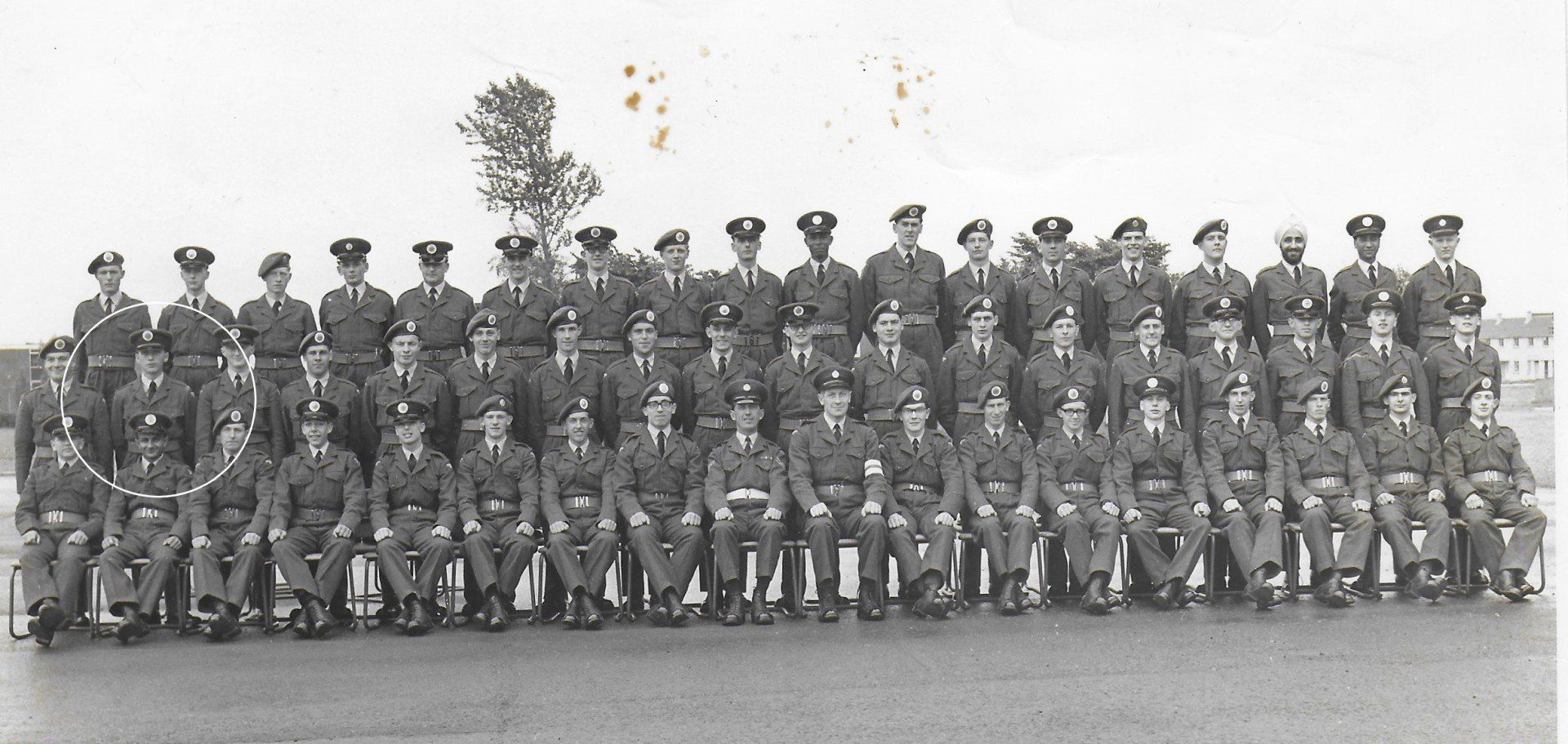Close-up from the flight photograph. Interestingly, the person in the hat behind me went on later to become a fellow linguist, whilst the person on my direct left is “Taff” Hockaday, a PTI with whom I was to play representative rugby later in my RAF career.
The white discs behind the cap badges were used to denote that we were recruits in training. Our first task after pass-out was to ceremoniously discard these identifiers.



